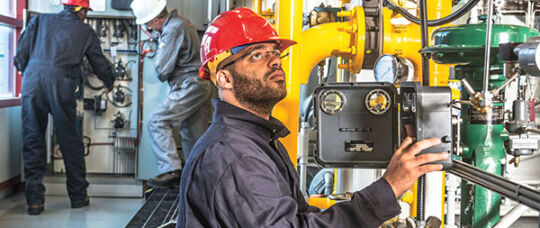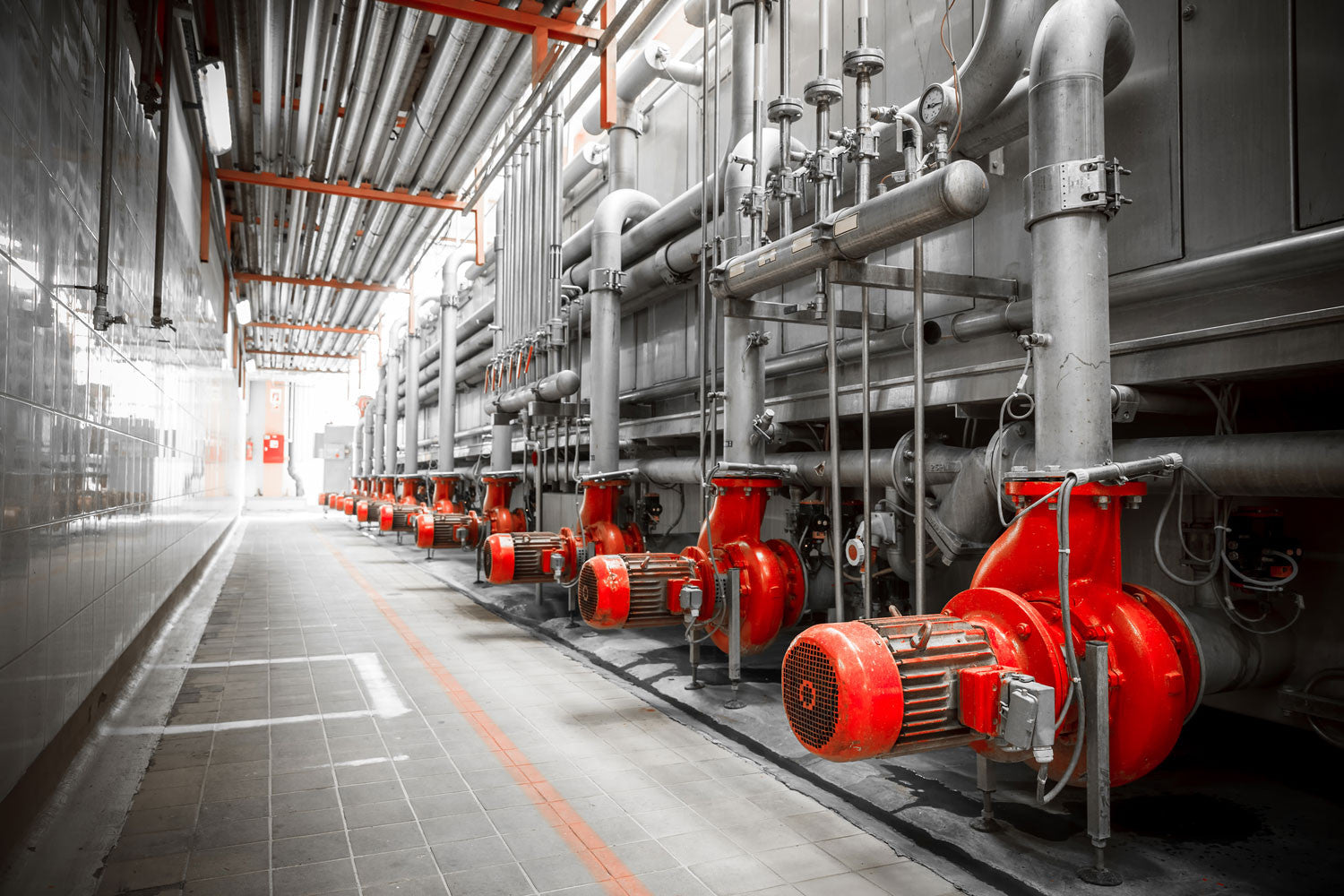Roar Solutions Fundamentals Explained
Wiki Article
What Does Roar Solutions Mean?
Table of ContentsThe Facts About Roar Solutions UncoveredGetting The Roar Solutions To WorkThe smart Trick of Roar Solutions That Nobody is Talking About
In such an ambience a fire or surge is possible when three basic problems are satisfied. This is usually described as the "dangerous area" or "combustion" triangular. In order to protect setups from a prospective explosion a method of evaluating and categorizing a potentially hazardous location is needed. The function of this is to ensure the proper option and setup of equipment to ultimately protect against a surge and to ensure safety and security of life.
(https://www.anobii.com/en/01749dcc41232b575a/profile/activity)
No tools needs to be mounted where the surface temperature of the equipment is greater than the ignition temperature of the provided hazard. Below are some common dust dangerous and their minimum ignition temperature. Coal Dust 380C 225C Polythene 420C (thaws) Methyl Cellulose 420C 320C Starch 460C 435C Flour 490C 340C Sugar 490C 460C Grain Dirt 510C 300C Phenolic Resin 530C > 450C Aluminium 590C > 450C PVC 700C > 450C Residue 810C 570C The likelihood of the risk being present in a concentration high sufficient to create an ignition will certainly vary from place to place.
In order to categorize this risk an installment is divided into areas of threat depending upon the amount of time the dangerous exists. These areas are referred to as Zones. For gases and vapours and dirts and fibers there are 3 zones. Zone 0 Area 20 An unsafe ambience is extremely likely to be present and might be existing for extended periods of time (> 1000 hours per year) and even constantly Zone 1 Area 21 A harmful environment is possible but not likely to be existing for extended periods of time (> 10 450 C [842 F] A category of T6 indicates the minimum ignition temperature level is > 85 C [185 F] Hazardous location electrical equipment possibly developed for usage in higher ambient temperature levels. This would indicated on the ranking plate e.g. EExe II C T3 Ta + 60C( This implies at 60C ambient T3 will certainly not be surpassed) T1 T1, T2, T3, T4, T5, T6 T2 T2, T3, T4, T5, T6 T3 T3, T4, T5, T6 T4 T4, T5, T6 T5 T5, T6 T6 T6 A T Course ranking of T1 means the optimum surface area temperature created by the instrument at 40 C is 450 C. Thinking the associated T Course and Temperature score for the equipment are ideal for the area, you can always utilize a tool with a much more stringent Division rating than needed for the area. There isn't a clear response to this inquiry unfortunately. It really does rely on the kind of devices and what fixings need to be lugged out. Equipment with details test treatments that can't be carried out in the area in order to achieve/maintain 3rd party rating. Should return to the factory if it is prior to the tools's service. Area Repair By Authorised Worker: Difficult testing might not be called for however details procedures may require to be followed in order for the equipment to preserve its 3rd party rating. Authorised employees must be utilized to do the job appropriately Repair work need to be a like for like substitute. New part have to be thought about as a straight substitute calling for no unique screening of the tools after the repair is complete. Each piece of equipment with a hazardous ranking should be evaluated separately. These are described at a high level below, however for more in-depth info, please refer directly to the guidelines.
The Greatest Guide To Roar Solutions
The equipment register is a comprehensive data source of equipment documents that includes a minimum collection of fields to recognize each product's location, technical criteria, Ex lover classification, age, and ecological information. This info is important for monitoring and managing the tools efficiently within unsafe locations. On the other hand, for routine or RBI sampling examinations, the grade will certainly be a combination of Thorough and Close evaluations. The proportion of Detailed to Shut examinations will certainly be established by the Devices Threat, which is assessed based on ignition risk (the likelihood of a resource of ignition versus the possibility of a combustible atmosphere )and the dangerous location category( Zone 0, 1, or 2). This variant will likewise affect the resourcing requirements for work preparation. When Whole lots are defined, you can establish tasting strategies based on the sample size of each Great deal, which describes the variety of arbitrary equipment products to be checked. To page identify the needed example dimension, two elements require to be assessed: the dimension of the Lot and the group of assessment, which shows the level of effort that must be applied( lowered, normal, or increased )to the assessment of the Great deal. By incorporating the category of evaluation with the Whole lot dimension, you can after that establish the ideal denial standards for an example, implying the allowable number of faulty products discovered within that example. For more details on this procedure, please refer to the Energy Institute Standards. The IEC 60079 standard suggests that the optimum interval between examinations need to not go beyond 3 years. EEHA assessments will certainly additionally be carried out outside of RBI projects as component of scheduled maintenance and tools overhauls or repairs. These inspections can be attributed towards the RBI sample dimensions within the influenced Whole lots. EEHA evaluations are conducted to identify mistakes in electrical equipment. A heavy scoring system is vital, as a single tool may have multiple faults, each with differing degrees of ignition risk. If the combined rating of both assessments is less than twice the mistake rating, the Whole lot is considered acceptable. If the Great deal is still considered inappropriate, it has to go through a complete inspection or reason, which might activate stricter assessment protocols. Accepted Whole lot: The causes of any kind of faults are identified. If an usual failure mode is located, extra tools may need evaluation and fixing. Faults are classified by seriousness( Security, Stability, House cleaning ), guaranteeing that immediate issues are examined and addressed promptly to alleviate any effect on safety and security or procedures. The EEHA data source need to track and videotape the lifecycle of faults together with the restorative actions taken. Implementing a durable Risk-Based Inspection( RBI )technique is essential for making sure conformity and security in taking care of Electric Tools in Hazardous Areas( EEHA) (eeha certificate). Automated Fault Rating and Lifecycle Monitoring: Easily take care of mistakes and track their lifecycle to enhance evaluation accuracy. The introduction of this assistance for risk-based examination further strengthens Inspectivity's setting as a best-in-class service for regulative compliance, in addition to for any type of asset-centric assessment use instance. If you want finding out much more, we invite you to request a demo and uncover just how our remedy can transform your EEHA monitoring procedures.
Roar Solutions Can Be Fun For Everyone

In regards to explosive threat, a hazardous area is a setting in which an explosive environment is present (or might be anticipated to be present) in amounts that call for special preventative measures for the construction, installment and use equipment. eeha courses. In this article we discover the challenges faced in the office, the danger control measures, and the required competencies to function safely
These compounds can, in particular problems, create explosive ambiences and these can have significant and terrible repercussions. Many of us are acquainted with the fire triangular eliminate any kind of one of the 3 components and the fire can not occur, yet what does this mean in the context of unsafe locations?
In most circumstances, we can do little about the levels of oxygen airborne, but we can have considerable influence on resources of ignition, as an example electrical equipment. Dangerous locations are recorded on the unsafe location category drawing and are determined on-site by the triangular "EX" indication. Below, amongst various other vital info, zones are split into 3 kinds relying on the risk, the possibility and duration that an explosive atmosphere will exist; Zone 0 or 20 is considered the most dangerous and Area 2 or 22 is regarded the least.
Report this wiki page